LATEST INSIGHTS
Last night’s Federal Budget release from new Treasurer Jim Chalmers outlines the Labor Government’s priorities off the back of the May 2022 Federal election.
The priorities from this budget are trying to relieve cost of living expenses with inflation expected to peak at 7.75%, before reducing to 3.5% in the 2023-24 year. To help with the cost of living, the labor government focused on the areas of childcare, paid parental leave, medicines, housing and wage increases.
Below the Synergy Accountants and Synergy Business Finance team have recapped their key take aways from the 2022-23 October Federal Budget.
Individuals
The Government announced the ‘Stage 3 tax changes’ will commence from 1 July 2024, as previously legislated. While all other personal tax rates will remain unchanged for the 2022-23 financial year.
The 2022-23 tax rates and income thresholds for residents are:
| Taxable Income | Tax Payable |
|---|---|
| $0-$18,200 | Nil |
| $18,201-$45,000 | Nil + 19% of excess over $18,200 |
| $45,001-$120,000 | $5,092 + 32.5% of excess over $45,000 |
| $120,001-$180,000 | $29,467 + 37% of excess over $120,000 |
| $180,001+ | $51,667 + 45% of excess over $180,000 |
Under the stage 3 personal income tax rate changes, the 32.5% marginal tax rate will be cut to 30% to form one tax bracket between $45,000 and $200,000. The 37% tax bracket will be removed at this time.
Meaning, from 1 July 2024 there will only be 3 personal marginal income tax rates – 19%, 30% and 45%.
The 2024-25 tax rates and income thresholds for residents are:
| Taxable Income | Tax Payable |
|---|---|
| $0-$18,200 | Nil |
| $18,201-$45,000 | Nil + 19% of excess over $18,200 |
| $45,001-$200,000 | $5,092 + 32.5% of excess over $45,000 |
| $180,001+ | $51,592 + 45% of excess over $180,000 |
Below are the rates and thresholds summary:
| Rate | 2022-23 to 2023-24 | From 1.7.2024 (unchanged) |
|---|---|---|
| Nil | $0-$18,200 | $0-$18,200 |
| 19% | $18,201-$45,000 | $18,201-$45,000 |
| 30% | N/A | $45,001-$200,000 |
| 32.5% | $45,001-$120,000 | N/A |
| 37% | $120,001-$180,000 | N/A |
| 45% | $180,001+ | $200,001+ |
| Low and middle income tax offset (LMITO) | N/A | N/A |
| Low-income tax offset (LITO) | Up to $700 | Up to $700 |
“This budget didn’t extend the low and middle income tax offset (LMITO) for the 2022-23 income year and will now cease. This has now been replaced by the low-income tax offset (LITO). As a result, low-to-middle income earners may see their tax refunds reduce anywhere from $675-$1,500 in the 2023 financial year” Synergy Accountants Director Dan Chappel said.
To-be Parents
An expansion of the Paid Parental Leave (PPL) scheme was announced in the budget from 1 July 2023 – after which either parent will be able to claim the payment, as well as both birth parents and non-birth parents able to receive the payment if they meet eligibility criteria.
“From 1 July 2024, Paid Parental Leave will increase by two additional weeks a year until it reaches 26 weeks from 1 July 2026, an increase of an additional six weeks to current Paid Parental Leave rules. Both parents will be able to share the leave entitlement, while sole parents will be able to access the full 26 weeks” Dan said.
Further to this, from July 2023 both parents will be able to take Government-paid leave in blocks as small as a day at a time with periods of work in between to provide greater flexibility for new parents.
Eligibility will also be expanded through the introduction of a $350,000 family income test, which families can be assessed under if they do not meet the individual income test. Single parents will also be able to access the full entitlement each year.
Home Buyers
“The Government has announced that it will establish the ‘Regional First Home Buyers Guarantee’ to promote home ownership in regional locations. The guarantee will be for eligible citizens and permanent residents who have lived in a regional location for more than 12 months and looking to purchase their first home in that location with a minimum deposit of 5%” Synergy Business Finance Managing Director Marcus Barnard said.
“The Government will also invest $10 billion in the newly created ‘Housing Australia Future Fund’, to be managed by the Future Fund Management agency. The fund will be used to deliver 30,000 social and affordable homes over 5 years and allocate $330 million for acute housing needs” Marcus added.
Small to Medium Business
The Government will not proceed with the proposal to allow taxpayers to self-assess the effective life of intangible depreciating assets – after initially being announced in the 2021-22 Budget.
In addition, the 2018-19 Budget measure that proposed introducing a limit of $10,000 for cash payments made to businesses for goods and services (and for which a delayed start date was announced in 2018-19) has been abandoned.
Superannuation
The Government confirmed its election commitment that the minimum eligibility age for making superannuation downsizer contributions will be lowered from age 60 to age 55.
This will allow individuals aged 55 or over to make an additional non-concessional contribution of up to $300,000 from the proceeds of selling their main residence outside of the existing contribution caps.
The individual or spouse must have owned the home for 10 years & make the contribution within 90 days after the home is sold.
“The reduction in minimum age eligibility from 60 to 55 years of age is proposed to come into effect from the first quarter after royal assent” Dan said.









